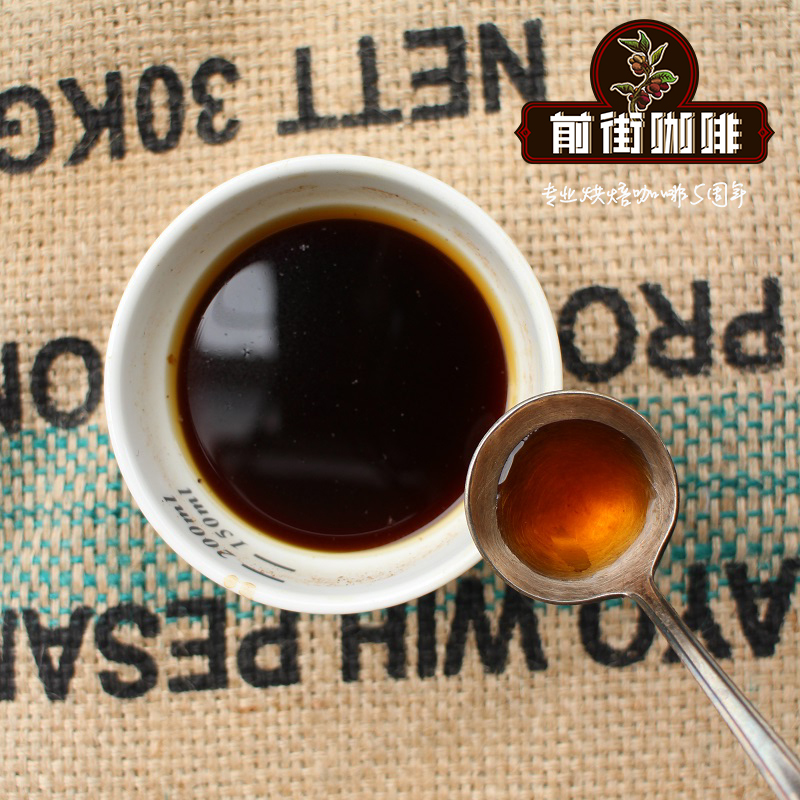The relationship between Sidamo and Yega Xuefei A brief introduction to the characteristics of coffee in Yega Xuefei producing area

Professional coffee knowledge exchange More coffee bean information Please pay attention to coffee workshop (Weixin Official Accounts cafe_style)
Front Street Coffee-Introduction to the relationship between Yega Shefi and Sidama
Ethiopia is a historical and traditional agricultural country that can be regarded as the origin of coffee. The name "coffee" comes from the province of Kafa, located in the southwest of the country, and the main producing area in the south is Sidama. Yagashefi is one of the regions south of Sidama. Ethiopia is an important coffee producer with approximately 12 million people engaged in coffee production and is Africa's leading exporter of arabica coffee beans. The quality of coffee here is excellent and worth looking for. We customarily divide Ethiopia into nine regions: Gemma, Sidama, Yegashefi, Hara, Limu, Iruba, Kimbi (Lekanti), Tin, Bebeka. Lake Tana's Zig is not included in the nine major production areas! Among the nine producing areas, Yejia Shefei, Sidama, Limu and Harar belong to fine producing areas.
Yegashefi: 1800 - 2000 meters above sea level; Yegashefi means "let's settle down in this wetland." In 2003, coffee chemist Dr. Illy even pointed out that some of the aroma components of Yerga Shefi can also be found in Chanel No. 5 perfume! Yejia Shefei is attached to the Sidama production area, which is independent due to its special flavor. It includes Wenago, Kochere, Gelena/Abaya and other three sub-production areas! Ethiopia's yerga sherfie's floral aroma makes yerga sherfie one of the world's most famous fine green beans. Especially mild, it has a fragrance like flowers, a lingering fragrance around the tip of the tongue, and a mild texture, all of which have become the unique characteristics of Yejia Xuefei. Over the past few decades, raw Ethiopian yega-shefi beans have been processed by washing.
Sidama: 1400 m-2200 m above sea level, flavor similar to Yega Shefi, refined washed or sun-dried Sidama also has floral and orange flavor, sour and soft, worth not less than Yega Shefi. This coffee is widely used to blend with coffee produced in other parts of the world in order to adjust the balance of mocha aroma and taste. It has refreshing acidity and elegant taste that can only be felt in premium champagne, and it can also make people feel the unique aroma of mocha coffee and the excellent balance of acidity and sweetness.
Yirgacheffe and Sidamo treated by washing have a soft texture without the bitter taste characteristic of earthy taste. Although it is the same coffee, coffee will have a completely different flavor when processed by natural drying, which is mainly used in eastern Ethiopia.
Ethiopian coffee processed by washing has a maximum grade of 2 or 3, and eastern coffee processed by natural drying has a grade of 4 or 5. Occasionally, grade 5 coffee processed by natural drying is circulated as grade 4 for tax evasion or customs inspection. Ethiopia's grades are somewhat confusing, as Ethiopian yeghashefi has a maximum grade of 1 or 2, but Harar coffee has a maximum grade of 4.
END
Important Notice :
前街咖啡 FrontStreet Coffee has moved to new addredd:
FrontStreet Coffee Address: 315,Donghua East Road,GuangZhou
Tel:020 38364473
- Prev

A brief introduction to the Coffee Bean Red Cherry Project Yejia Xuefei Red Cherry hand Coffee sharing
Professional coffee knowledge exchange more coffee bean information please follow the coffee workshop (Wechat official account cafe_style) in front of the street Yega Xuefei red cherry coffee brewing sharing what is the red cherry plan as a barista or enthusiast, you should also have heard of the sun-dried red cherries in Ethiopia. People who don't know it will think that sun-red cherry is a kind of coffee bean, but in fact, it means "red cherry".
- Next

A brief introduction to the Yega Xuefei grading system with a classification of 300 grams
For more information on coffee beans, please follow the coffee workshop (Wechat official account cafe_style) A brief introduction to the Yega Xuefei Coffee grading system in the front street of the Coffee Workshop (official Wechat account). A small town in Ethiopia is nearly 2000 meters above sea level. It has been a wetland since ancient times. Lake Turkana, Lake Abaya and Lake Chamo bring a moist and warm climate, walking on mountain stream paths, foggy and breezy.
Related
- Beginners will see the "Coffee pull flower" guide!
- What is the difference between ice blog purified milk and ordinary milk coffee?
- Why is the Philippines the largest producer of crops in Liberia?
- For coffee extraction, should the fine powder be retained?
- How does extracted espresso fill pressed powder? How much strength does it take to press the powder?
- How to make jasmine cold extract coffee? Is the jasmine + latte good?
- Will this little toy really make the coffee taste better? How does Lily Drip affect coffee extraction?
- Will the action of slapping the filter cup also affect coffee extraction?
- What's the difference between powder-to-water ratio and powder-to-liquid ratio?
- What is the Ethiopian local species? What does it have to do with Heirloom native species?

